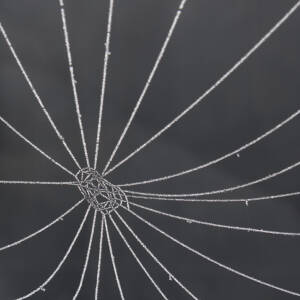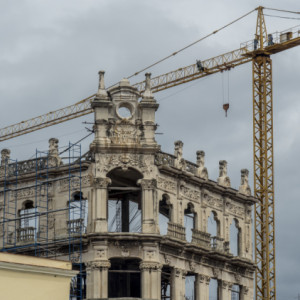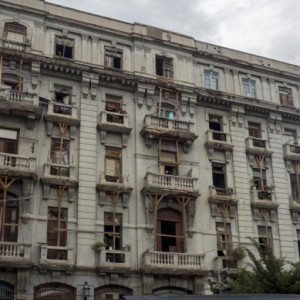This morning our feet were telling us that Havana is a capital city and there are few capital cities you can see entirely on foot. So we set off for the hop-on-hop-off bus tour that goes to and then beyond the Plaza de la Revolución, the place where I’d originally hoped to see the May Day parade.
I knew Plaza de la Revolución was big but I hadn’t quite imagined the vast expanse that it is. Fidel has addressed a million citizens there and, in the quirky contradictions that Cuba poses, two popes have used it for mass masses. Today the square was bleak and there was something a little sad about the workers on their cherry-pickers struggling to release hundreds of buffeting flags from the tall poles all round the plaza then unwrap themselves from the unmanageable fabric (extra). The ten-lane road on the south side would have been filled with banner-to-banner marchers during the festivities but was being used only by the occasional car or tour bus today. We sat on the steps to the tall, star-shaped José Martí memorial, where Friday’s podium would have been, imagining wave after wave of processing red and blue. Raul and co would have had their backs to José Martí, but neither he nor the marchers could have missed the huge ribbon-metal images of Che and Fidel on concrete backdrops on the north side of the square, both taller than the eight-story buildings they are mounted against.
We watched a couple of hop-on-hop-off buses arrive at the coach park on one side of the plaza then leave while we were still somehow transfixed by the grey vastness of it all, but we hopped onto the third. Its long route drove us past a large cemetery to the expensive part of town, Miramar, with modern reflective-glass hotels. Then in an inscrutable meander, we were taken past the utterly bizarre, constructivist, Russian embassy, completed in 1987 when the Soviet Union was crucial to Cuba’s economy. Our route back to town took us past many attempts to rescue buildings, one a huge crumbling façade shored up by rusting scaffolding with creepers growing up it. There is no chance of Cuba’s small economy rescuing all this heritage.
We were in pre-flight limbo – where it’s not yet time to leave but you have to watch the clock all the time – and I’d wanted to use some of our time with a visit to the highly regarded National Museum of Fine Arts. But back in town we discovered that it was closed on Mondays. Frustratingly bad planning – we could have visited yesterday. Instead we walked a bit aimlessly round more of Havana Vieja looking at buildings: a square unveiled two weeks ago after a lavish architectural restoration twinning arrangement with Italy, which was so swishly up-market and elegant that it seemed to have none of Cuba left in it, a building where the inhabitants had obviously gone to the shop asking for whatever green paint was available (extra), another that would have been evacuated in most of Europe, with wooden ‘acro-props’ holding up its balconies and cornices (extra).
We were hungry, the rain was getting worse and we took shelter in a bleak pizza place, where the pizza was vile and we were overcharged. Time to move on.
Fond farewells to Ariel and Carmen who have been such good hosts to us in Havana and we were in the taxi to the airport to take ourselves back to Holguin, our starting point two weeks ago.
A tedious journey, beset with no information other than a list of cancelled and delayed flights but lightened by meeting L, a Cuban Londoner desperate to get back to London after a ‘holiday’ with his Cuban family. He, like us, was flying to Holguin in order to catch tomorrow’s flight from there to London. Luckily our flight was only delayed not cancelled and once in Holguin we shared a taxi, dropped L off at the state-run hotel, and made our way back to the delightful Ana and Raciel, who greeted us like long-lost family.




Comments
Sign in or get an account to comment.


